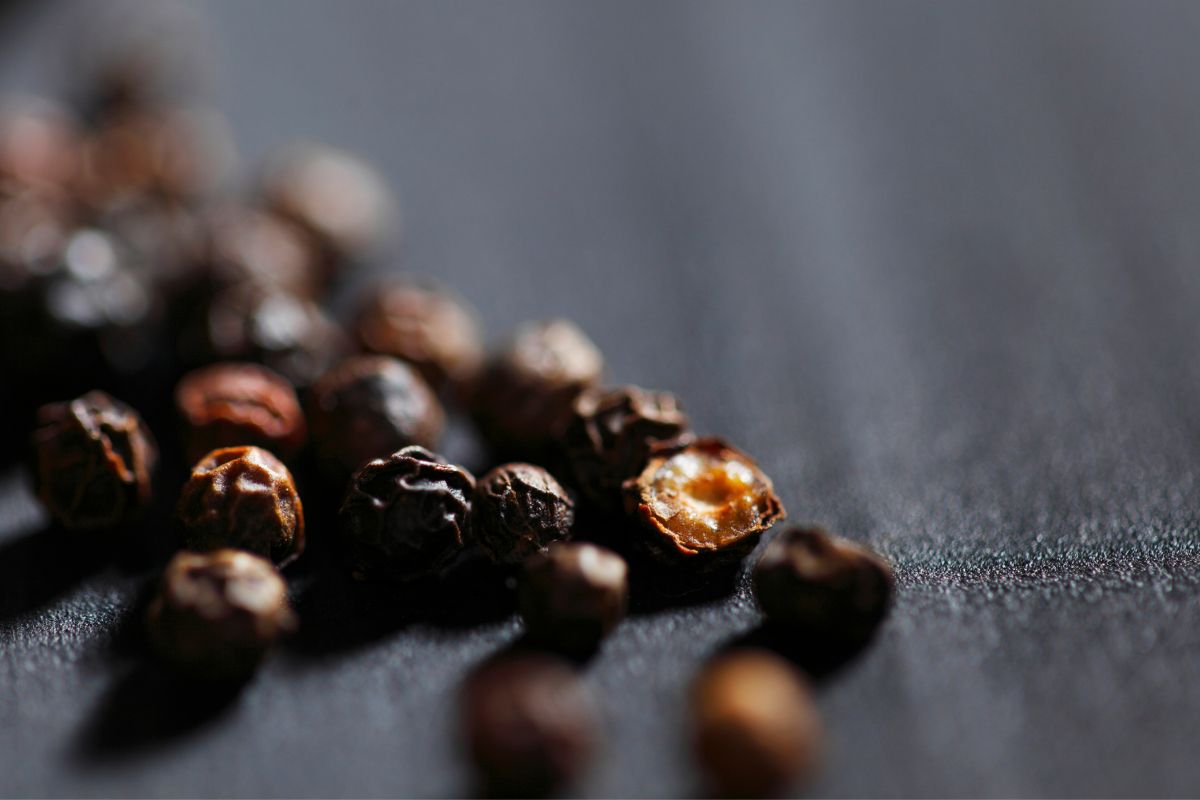Whole peppercorns, from the fruit of the flowering vine Piper nigrum, come in different varieties, such as black peppercorns, white peppercorns, and green peppercorns. Whole peppercorns add earthy, warm flavors to marinades, stocks, sauces, curries, or stews. You can also grind them to add depth to spice blends.
Table of Contents
What are whole peppercorns?
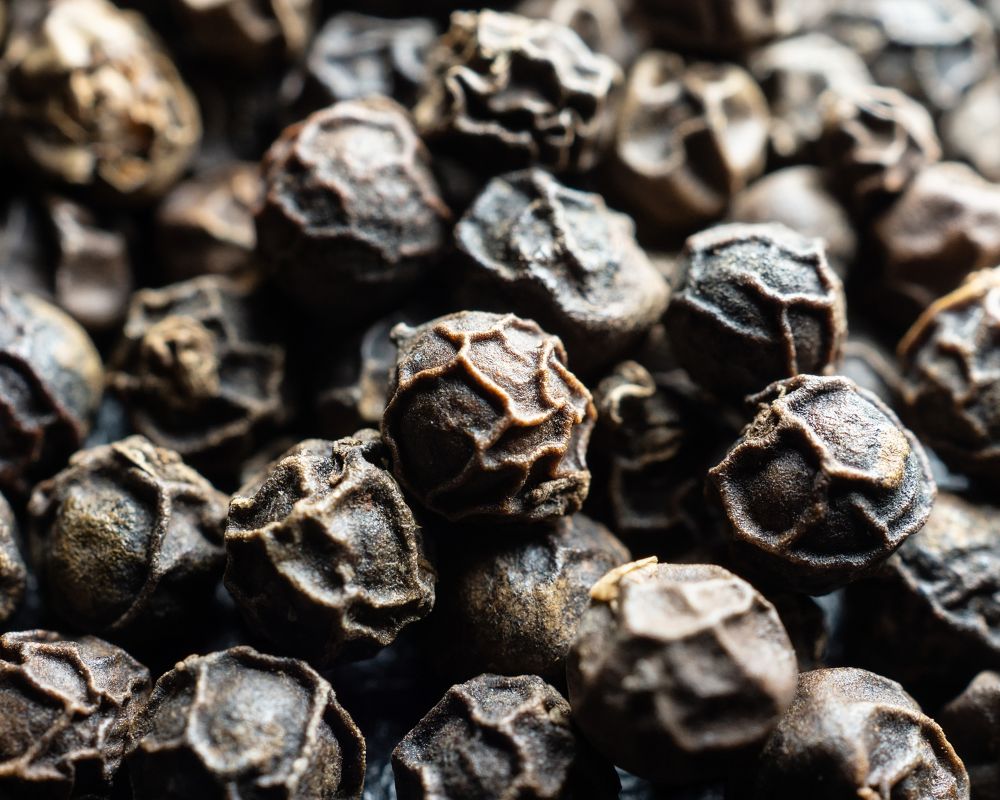
Whole peppercorns are the whole fruits harvested from the Piper nigrum vine belonging to the Piperaceae or the pepper family. The fruits are often dried and used as a seasoning. Peppercorns account for about 20% of the global spice trade.
| Origin | Native to the Kerala State of India |
| Appearance | Small and round |
| Flavor profile | Depends on the type |
Origin
Peppercorns are native to the Kerala State of India, where people have used them for thousands of years. Traders from India were responsible for the spread of this aromatic spice to China in the east and into ancient Rome, Greece, and Egypt in the west.
Appearance
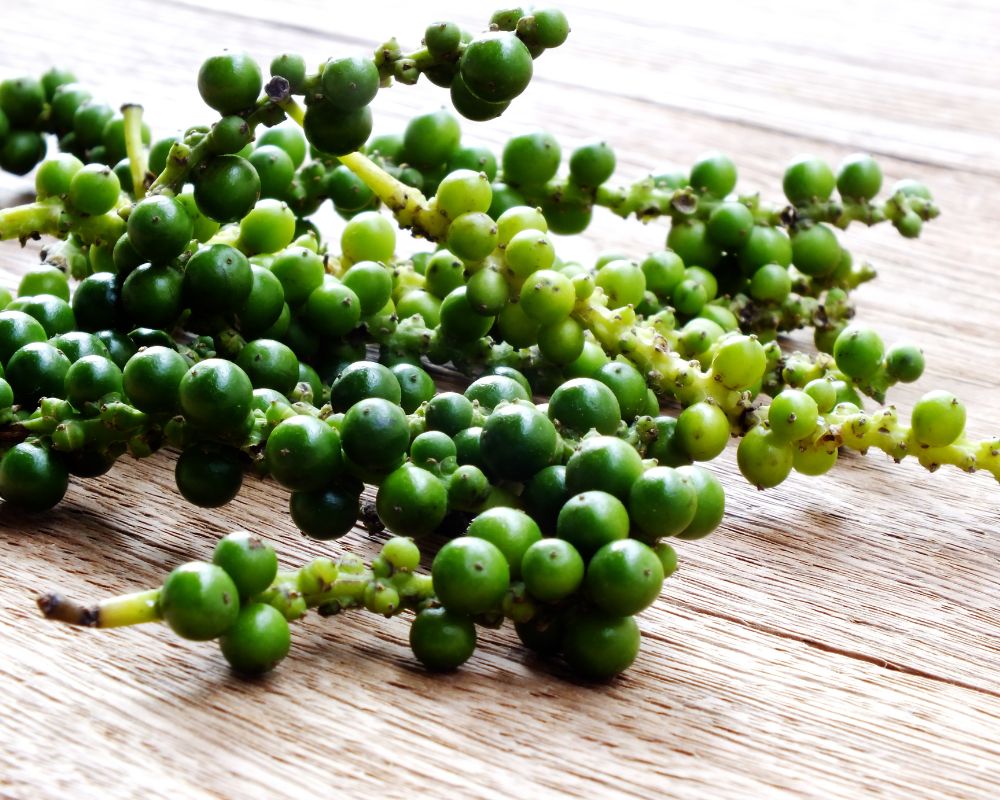


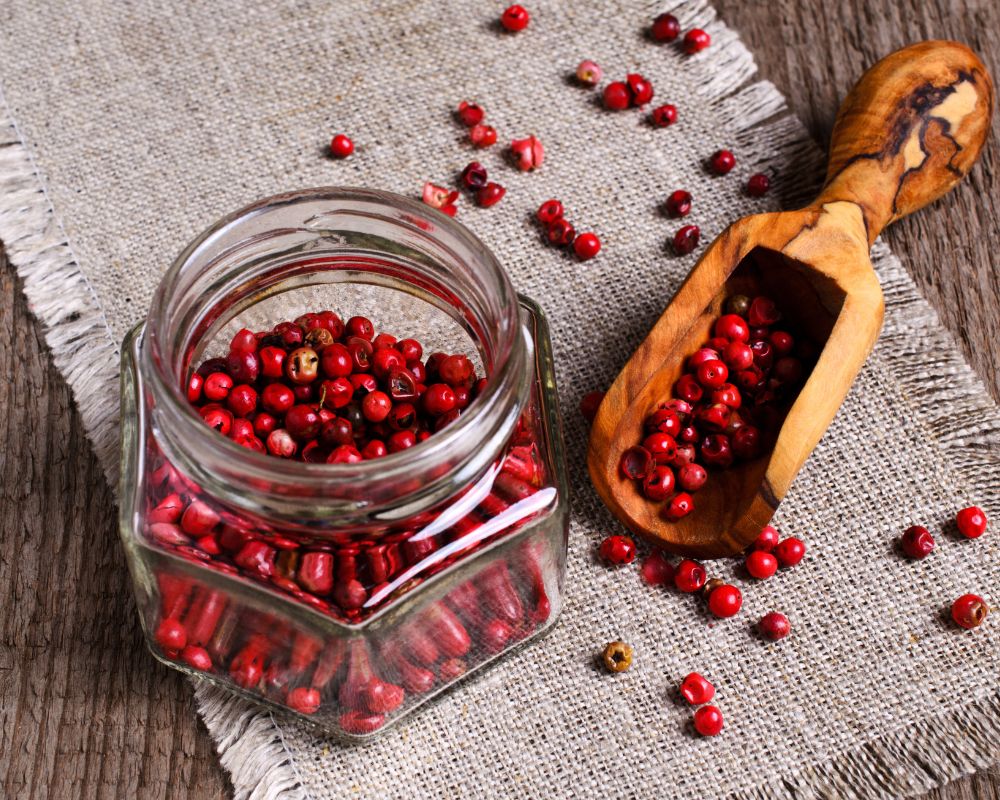
Whole peppercorns are small and round fruits of the pepper plant. Pepper berries come in various colors depending on how they are processed:
- Green peppercorns: unripe berries of pepper
- White peppercorns: come without the husk
- Black peppercorns: have been steam sterilized and dried until their husks turn wrinkly black
- Red peppercorns: completely ripe variety of black peppercorns
It is also common to see different whole peppercorns combined to make a perfect peppercorn blend. Whole peppercorns mixed with other spices such as paprika and sea salt, among others, are also best sellers. They make a good rub for meats or a spice blend with great flavor.
Flavor profile
Whole black peppercorns, green peppercorns, and white pepper have varying flavor profiles with recognizable similarities. Whole peppercorns render dishes pungent and spicy flavors with earthy and slightly floral notes.
| Black pepper | Offers the most robust flavor, goes with any recipe that requires tingly warmth |
| Green peppercorns | mild and herbaceous, perfect for making peppercorn sauce or pies, often mixed with other spices to create blends in vinegar or oil |
| White peppercorns | the mildest, less earthy than the black pepper and the green peppercorns, ideal for bechamel, alfredo sauce, mashed potatoes, or soups |
Types & classification
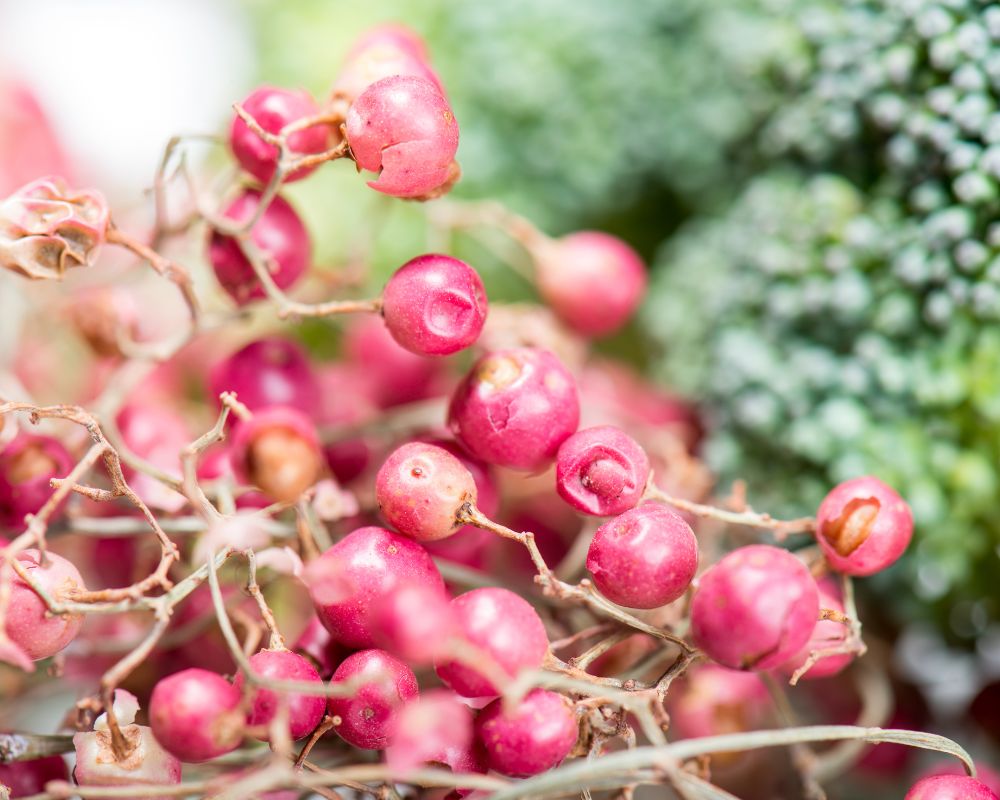
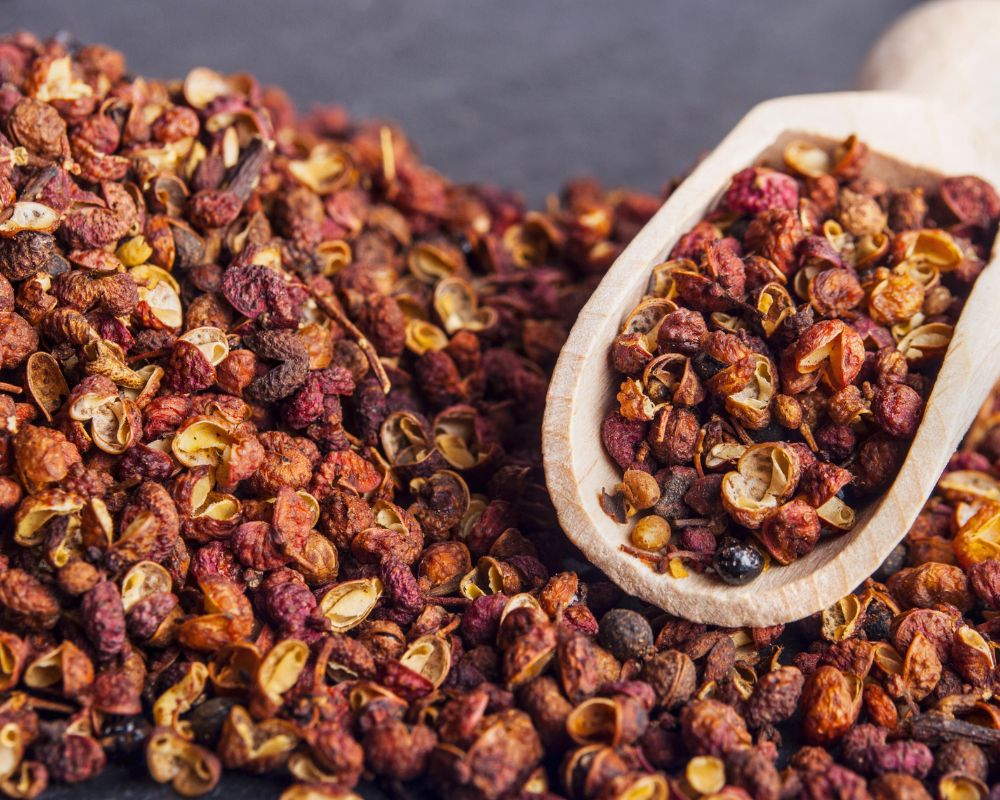
Aside from black peppercorns, white peppercorns, and green peppercorns, you will also find pink peppercorns and Szechuan peppercorns. The last two are unrelated to the first three and do not come from the Piper nigrum berries.
Pink peppercorns are from Peruvian pepper trees related to cashews and mangoes. The Szechuan pepper is from an Asian berry resembling whole peppercorns.
Peppercorns can also be classified according to their geographic origin. Some good examples include:
- Tellicherry peppercorns (India)
- Malabar (India)
- Lampong (Indonesia)
- Belem (Brazil)
- Sarawak (Malaysia)
Because of their accessibility, whole peppercorns are present in cuisines worldwide. They are commonly used when pickling, marinading, or making soups, broths, or pot roasts.
Nutritional Benefits of whole peppercorns
The piperine compound in whole peppercorns is rich in antioxidants that can help the body fight damage from free radicals. Likewise, it may aid in averting inflammation, certain cancers, and heart disease.
Piperine has also been linked to improved brain functions and is considered beneficial in combating Alzheimer’s and similar degenerative neurologic conditions. Peppercorns may also aid in lowering cholesterol and blood sugar levels.
Are you supposed to eat whole peppercorns?
Whole peppercorns bring great flavors, but you should not eat them as they are. Instead, you should crush or ground them to enjoy their full flavor. Additionally, consuming large amounts may lead to a burning sensation in the throat and stomachache.
Note that black pepper is gluten-free and, like most spices, nearly always kosher. When buying whole peppercorns, check the label or product information if you need a non-GMO spice.
When to use whole peppercorns instead of the ground?
Whole peppercorns are ideal for recipes that call for more pronounced earthy and warm flavors, such as when making marinades or cooking stew. You can also use them to season the meat before roasting or grilling.
Whole peppercorns may not mix well as ground pepper in food. People might not appreciate it in soup, sauces, or fried food because biting or chewing them may spread an overpowering peppery taste in the mouth.
Ground pepper has a far wider application because it is less potent. You can sprinkle it in practically anything without affecting the texture of the food while making the most of the aroma and flavors.
How to store whole peppercorns?
Store whole black peppercorns in an airtight container, just like most spices. You can also put them in a pepper mill or grinder.
3 Fun Facts about whole peppercorns
- At one point, black pepper was used as currency in the United Kingdom and Southeast Asia.
- Peppercorns were essential in the mummification process in Egypt.
- Today, the leading pepper producers are Sri Lanka, Indonesia, Brazil, and Vietnam.

